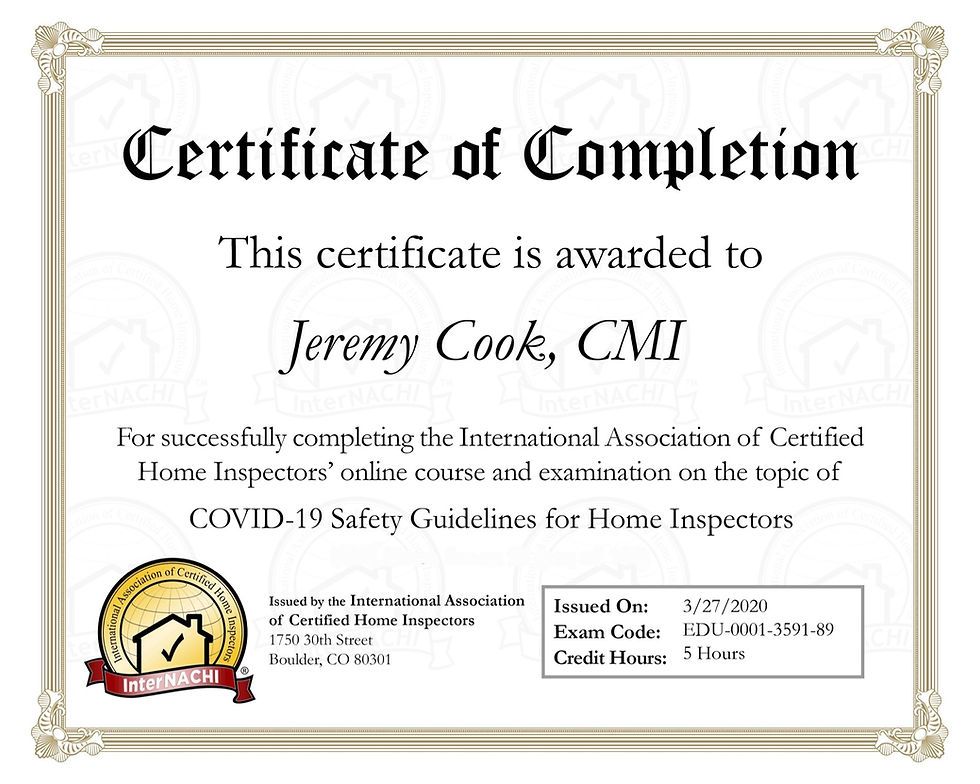Radon Facts vs. Fiction
- Jeremy Cook

- Jan 31, 2020
- 4 min read
There's a whole lot of hub-bub about Radon in Calgary, Airdrie, Cochrane, and Okotoks. Let's separate fact from fiction and clear the air (pun intended) around Radon.
Radon is a naturally occurring gas that comes from trace amounts of radioactive debris in the earths crust on which we build our homes. In other words, Radon gas is common and plentiful. It is most commonly talked about in reference to the homes basement because the basement has the most exposure to the soil. Radon is measured in Becquerels per Cubic Metre (Bq/m3), FYI.
Radon gas is the second leading cause of lung cancer in Canada. It is a serious health risk that should be taken seriously. That being said, no one knows how much Radon gas is needed to cause cancer nor do they understand the required amount of time exposure to develop cancer. Canadian guidelines suggest that levels above 200 Bq/m3 are potentially dangerous while World Health Organization guidelines are set as low as 100 Bq/m3. Referencing the Canadian Medical Association Journal, homes built after 1992 had average levels above 142 Bq/m3 with homes built previous to 1992 at only 108 Bq/m3. We will discuss why in a moment. For now let's focus on the values. If the average Radon levels in Southern Alberta are between 142 and 108, and the safe values are set at 100 - 200, so I guess it depends which set of standards you're comparing them to. If you are comparing to international standards, the average levels are high. If you are comparing to the Canadian levels, our average Radon levels are low.
Why is the average higher in new homes? Because new homes are built more air tight than previous generations of construction and they are bigger. A tighter home means trapping Radon gases inside. Old homes were more breathable (less efficient) and expelled Radon daily. Higher efficiency comes at a cost. New homes also tested higher because they are larger homes on average. A larger home has a larger basement, a larger basement has more surface area exposed to potential Radon gas entry, and new basements are generally deeper in the earth than older homes. I know because I have crouched down to inspect many an old basement and have hit my head on a low beam or floor joist more than once.
Here's the important take away!
In my opinion you should test your home for Radon and remediate if needed but here's how you do it properly. Radon testing should NOT be completed by a home inspector! Unless that inspector is going to leave a testing unit behind for several months, you are wasting your money. Radon testing CANNOT be done in a short period of time. Short term tests are ineffective because Radon levels fluctuate throughout the year and seemingly innocuous changes, like opening a window, can completely undermine test results. I am a home inspector and I would love to make a quick buck testing for Radon, but the reason I don't is simple, it's not in my clients best interests. You can do the testing yourself for LESS money and the results will be MORE accurate. Yes, you read that correctly.
I recommend buying a test kit at your local hardware store for $30-$60, carefully reading the instructions, and completing testing yourself. Be sure to place the test unit on the lowest finished level of your home. If your basement is un-finished, than you will be placing the test on your first floor. You may be tempted to "get a better reading" by placing the test unit in your undeveloped basement, but you are only destroying your chances of finding out what's really going on with the Radon levels in your home.
Remediation: Typically costs less than $2500
This is the most simple part of the process of dealing with Radon. Removing Radon revolves around two simple principles.
1) Prevent air from entering the basement through the foundation
2) Remove the air that does enter the basement
Part one is accomplished by developing an undeveloped basement. That's right! Just finish your basement. Additional measures such as siliconing gaps and spray foaming openings can remediate an already finished basement.
Part two involves the installation of a fan. The fan is ideally placed in a length of pipe that runs between your basement floor and the outside of the home. I would only recommend this as a last resort following some very high Radon levels. Most remediations can be completed using step 1. The reason a fan should only be used when Radon levels are very high is that you want to consider other sources of airflow out of the home. Bathroom fans, HRV units, opening windows, and more. Consider the amount of air exchange already occurring in the home and remediate accordingly. Too much ventilation can result in poisonous gases entering the home from combustion appliances like furnaces, water heaters, and gas or wood fireplaces. I'm not saying a Radon remediation fan will cause backdrafting in every home, but you should consult a professional before moving to more radical means of remediation.






Comments